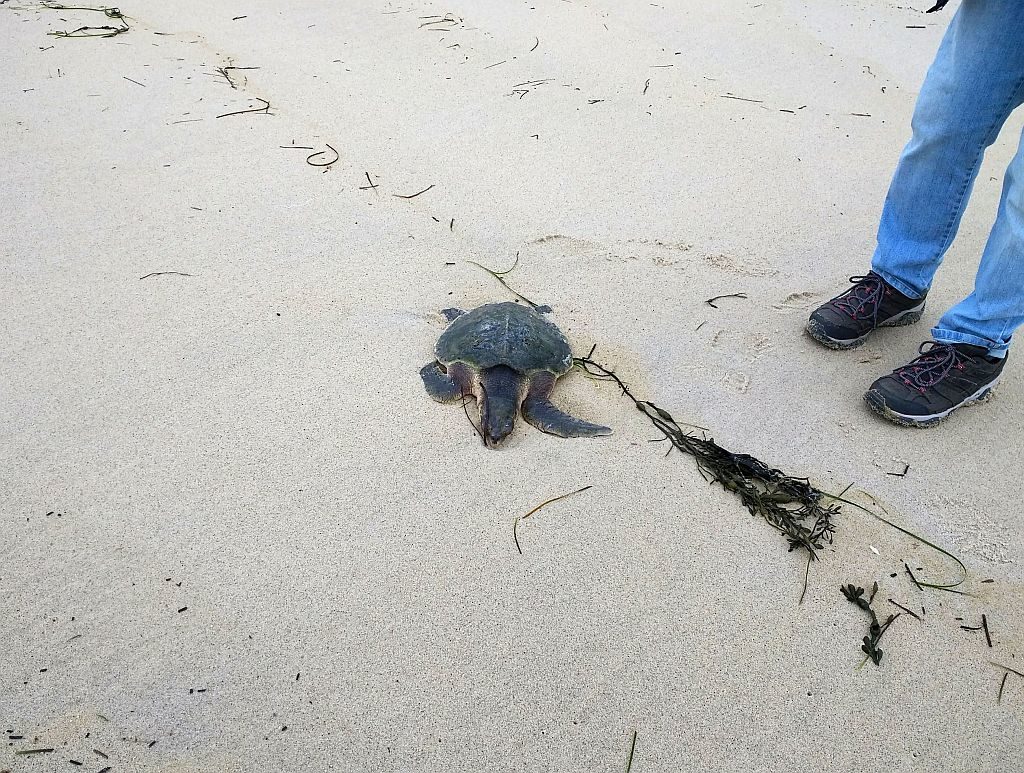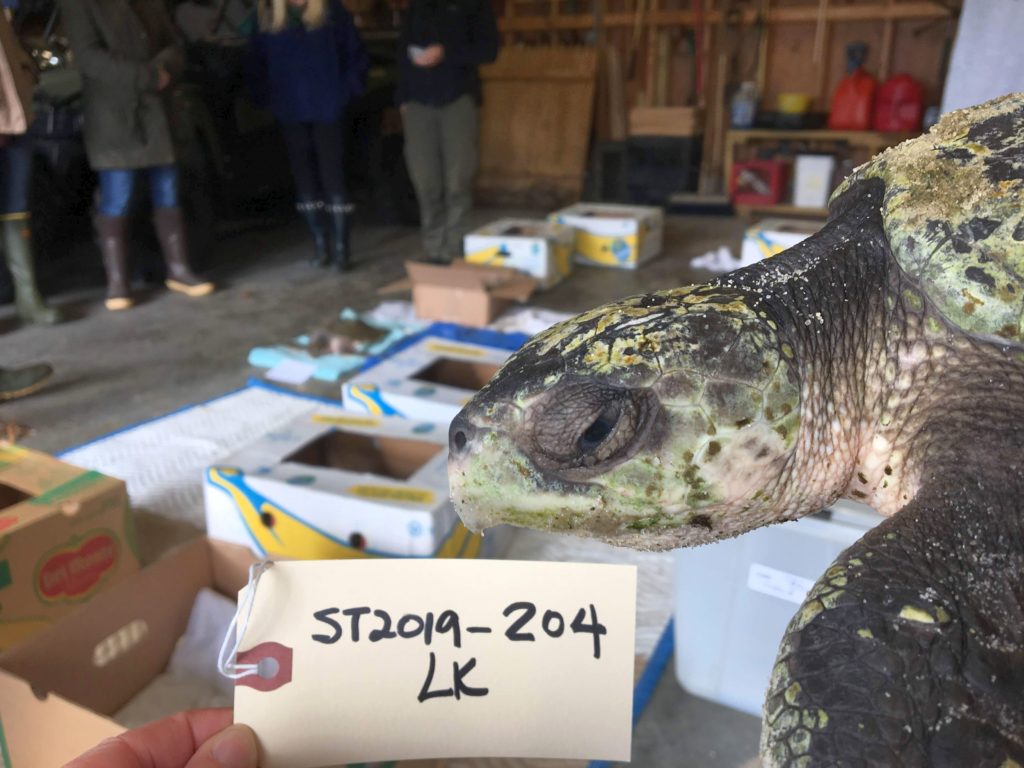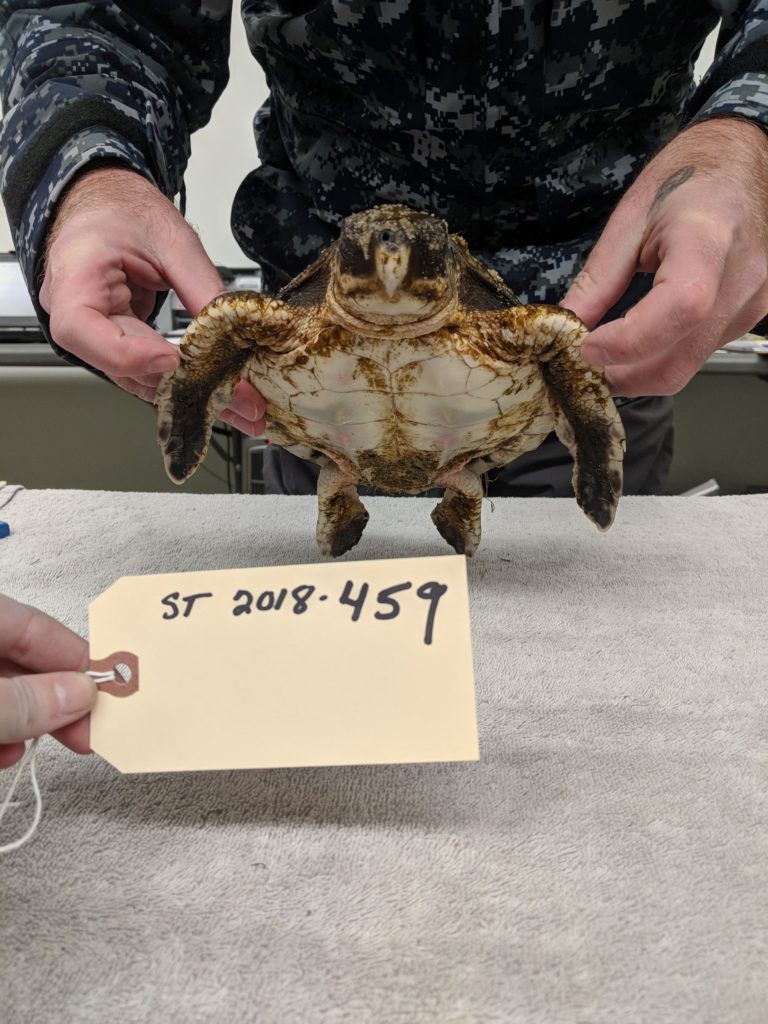It’s been a popular topic of small talk at the sanctuary this month: what a strange cold-stun sea turtle season it’s been and why we’ve had so (relatively) few turtles.
It’s important to note—we will likely surpass the 300-turtle mark very soon. That may sound like a lot, but last year we recovered more than 800 turtles. The year before that, it was more than 400. So what kept the numbers down?

Bob Prescott, the sanctuary’s director emeritus and longtime sea turtle program manager, believes a combination of southerly winds during the early fall may have helped turtles escape from the bay. And erratic winds may have kept some turtles from reaching shore.
“The wind never blew for more than three tide cycles except when it blew from the northeast,” Bob notes. In fact, Sandy Neck in Barnstable saw more cold-stunned turtles than any other location (and we’re very grateful to have had all that help from the Sandy Neck rangers!)

Sea turtle stranding coordinator Karen Dourdeville says also missing from this year’s cold-stun season were the “little ridleys”, the smallest of the young Kemp’s ridley sea turtles, about 8 inches in length or less, that often come ashore in the first couple of weeks of stranding season.

“We took a preliminary look and found that in 2018, this small size range made up 7 % of total cold-stunned ridleys, “Karen says. ” In 2019 so far, this same range represents just 1.2 % of the total ridleys cold-stunned. Did the little ridleys not get to Cape Cod Bay? Did they get blown offshore early in the fall and not end up in the Bay?”
So many questions!
Another curiosity this fall was the three “repeat customers”—three Kemp’s ridleys with PIT tags (the tags are similar to pet microchips) that told us they’d all cold-stunned on the Cape before! This fact may fuel more debate among turtle conservationists about the best locations for releasing rehabbed ridleys so they don’t make the trip back north.

One final factoid: One of our lowest sea turtle stranding years in the past decade was in 2013 when we recovered only about 200 turtles. But the next year produced a record-smashing season at well over 1200! Does this point to 2020 as a possible big year? It’s far from a scientific prediction. But it does make for good small talk!



Wish to collaborate in any way from Florida with your turtle programs.
Hope you can find any way to do this ?